UPSC Daily Current Affairs: 13 August 2024 | Current Affairs & Hindu Analysis: Daily, Weekly & Monthly PDF Download
GS3/Economy
NIRF Rankings Out: IIT Madras at Top for 6th Year
Source: Indian Express
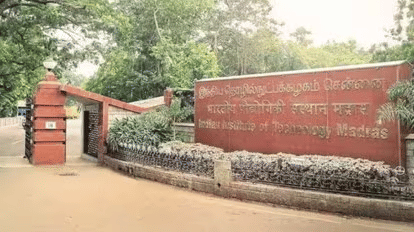
Why in News?
Indian Institute of Technology(IIT), Madras is the best education institution in the country for the sixth time since 2019, according to the overall ranking based on parameters identified and defined in the National Institutional Ranking Framework (NIRF).
- Background (Need for NIRF): In a country as diverse as India, ranking universities and institutions is not an easy task. The Ministry of Education established the National Institutional Ranking Framework (NIRF) in 2016 to determine the critical indicators on which institutions’ performance could be measured. Since then, institutions nationwide, including universities and colleges, eagerly await their standings in this nationally recognised system every year.
- About NIRF (Objective, Features, Ranking Framework, etc.): It is a methodology adopted by the to rank institutions of higher education in India.
- NIRF 2024 Rankings:
- Key Features of the Rankings:
- Participation: Participation in the NIRF rankings is voluntary. Institutions submit detailed data, which is then processed and ranked based on the NIRF criteria.
- Transparency: The NIRF ensures transparency by making its ranking methodology, data sources, and scoring system publicly available. This allows institutions to understand the areas they need to improve.
- Impact: NIRF rankings have become a significant reference point for students and parents in selecting institutions for higher education. They also encourage institutions to improve their performance in teaching, research, and inclusivity.
- How Does the NIRF Rank Institutes?:
- Currently, the NIRF releases rankings across various categories such as ‘Overall’, ‘Research Institutions Universities’, and ‘Colleges’, and specific disciplines like engineering, management, pharmacy, law, etc.
- The ranking framework judges these educational institutions under five broad generic groups of parameters: Teaching, Learning and Resources (TLR) (30% weightage), Research and Professional Practice (RP) (30% weightage), Graduation Outcomes (GO) (20% weightage), Outreach and Inclusivity (OI) (10% weightage), and Perception (PR) (10% weightage).
- Key Features of the Rankings:
GS3/Economy
Operational Guidelines for Implementation of ‘Model Solar Village’ Schemes
Source: AIR

Why in news?
The Ministry of New and Renewable Energy has issued operational guidelines for the Implementation of ‘under PM-Surya Ghar Muft Bijli Yojana. The centre recently allocated ₹800 crore for the same.
About PM Surya Ghar Muft Bijli Yojana
- Description: To provide 300 units of free electricity per month to beneficiaries through an investment of ₹75,000 crores.
- Deadline: Extended the deadline from 2022 to 2026.
- Announcement: Initially announced in an Interim Budget 2024-25 speech by the Finance Minister.
- Target: Aimed to light up 1 crore households.
- Urban Local Bodies and Panchayats: Incentivised to promote rooftop solar systems.
Features of the ‘Model Solar Village’ Initiative
- Comprehensive Solarization: Solarize all households and public areas with home lighting, water systems, pumps, and streetlights.
- Seeks to create: One Model Solar Village per district.
- Implementing Agency: State Renewable Energy Development Agency (SREDA) or another entity nominated by the State/UT Government will implement the scheme.
- 24x7 Solar-Powered Village: Develop villages powered entirely by solar energy, promoting self-reliance in meeting energy needs.
- Central Financial Assistance (CFA): ₹1 crore grant per village based on a Detailed Project Report (DPR) by the Implementing Agency.
- Eligibility Criteria: Revenue village with a population over 5,000 (or 2,000 in special category states). Based on installed renewable energy capacity, overseen by the District Level Committee (DLC) 6 months after the declaration.
- Fund Disbursement: 40% on the award of works, 40% after completion, 20% after 6 months of operation.
GS2/Polity
Adani Group and Hindenburg Report: A Saga of Controversy and Regulatory Scrutiny
Source: Frontline

Why in news?
A year and a half after its January 2023 report on the Adani Group, US-based short seller Hindenburg Research has levelled allegations against the chairperson of India's capital markets regulator Securities and Exchange Board of India (Sebi).
- Hindenburg Research has accused Sebi chairperson Madhabi Puri Buch and her husband of having stakes in offshore funds involved in the alleged Adani money siphoning scandal.
- The short seller (Hindenburg Research) seeks to draw a connection between the alleged involvement of two offshore funds, the Buchs' investments, and their various professional associations, suggesting that Ms. Buch may have shown favoritism toward the Adani Group.
Background
- Short selling involves profiting from a decline in a stock's price by selling borrowed shares and repurchasing them at a lower price.
- Short selling can serve many purposes, such as mitigating demand-supply imbalances in scrips and ensuring price efficiency.
- However, it has also been used as a means of manipulation - or what the U.S Securities and Exchange Commission (SEC) has described as a bear raid.
Example
- Anticipating a downward movement, an individual sells 10 shares at ₹100 apiece. The total sale value is ₹1,000.
- The price of the share decreases to ₹85 apiece and they opt to buy the quantity back. This time it will cost them ₹850 - a direct profit of ₹150.
Hindenburg and short selling
- Hindenburg had shorted electric truck maker Nikola Corp in 2020 placing concerns about their functionality.
- In October 2022, the Nikola's founder Trevor Milton was convicted by a U.S. jury of fraud for lying to investors about the technology
Hindenburg report on Adani
- In a January 2023 report, Hindenburg accused the Adani Group of decades-long stock manipulation and accounting fraud.
- The report was released just before Adani Enterprises' Rs 20,000-crore follow-on public offer (FPO), leading to a sharp decline in Adani shares and the eventual cancellation of the fully subscribed FPO.
- Adani denied the allegations, and most of the group's shares have since recovered.
Expert committee formed by SC to investigate
- In March 2023, the Supreme Court formed a six-member expert committee to investigate potential regulatory failures concerning the Adani Group.
- Separately, the court asked Sebi to specifically investigate if there was:
- a violation of the minimum public shareholding norms in public limited companies,
- a failure to disclose transactions with related parties, or
- any manipulation of stock prices.
Observation made by SC
- In May 2023, the expert committee reported that Sebi had found no evidence of money flow violations from offshore entities into Adani companies.
- By November 2023, the court upheld Sebi's investigation, rejecting the need for a Special Investigation Team (SIT) or CBI involvement.
- SEBI had completed 21 out of 22 probes by March 2024, with the final investigation nearing completion.
Hindenburg Research's allegations against SEBI Chairperson Madhabi Puri Buch and her husband
- Hindenburg suggests a conflict of interest and possible collusion due to the Buchs' investments in these funds.
- It asserted that this might explain SEBI's reluctance to take meaningful action in the ongoing Adani investigation.
- The allegations also focus on Ms. Buch's professional engagements.
- Hindenburg claims that she retained ownership of her consulting firm, Agora Partners Singapore, during her tenure at SEBI, only transferring it to her husband's name after becoming SEBI Chairperson.
- Furthermore, Hindenburg accuses her husband of benefiting from his role as a senior advisor at Blackstone, alleging that SEBI's policy changes under Ms. Buch's leadership favored Blackstone's interests in India's real estate investment trusts (REITs).
GS2/International Relations
Ukraine’s Kursk Operation in Russia
Source: Indian Express
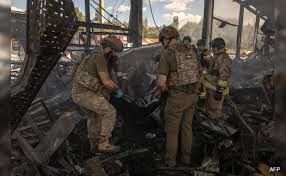
Why in news?
Ukrainian troops have advanced up to 35 kilometers into Russian territory in the Kursk region.
What is the Kursk Operation?
- The Kursk operation signifies a notable escalation in the ongoing conflict between Ukraine and Russia.
- Intense fighting has been a hallmark of the operation, with reports of casualties emerging.
About Kursk Region:
- Located in the western part of Russia, bordering Ukraine to the southwest.
- The region is historically significant as the site of the Battle of Kursk, the largest tank battle during World War II in 1943.
- Rich in iron ore, leading to significant mining activities.
- Experiences a continental climate with cold winters and warm summers.
Significance of the Kursk Operation for Ukraine
- Strategic Leverage: Capturing Russian territory in the Kursk region strengthens Ukraine's position for potential negotiations and land exchanges.
- Buffer Zone Creation: Establishes a protective buffer on Russian soil, enhancing security for contested Ukrainian areas.
- Military Diversion: By forcing Russia to redeploy troops, pressure on Ukrainian forces is eased as Russia's main front lines weaken.
PYQ:
Consider the following pairs:
Regions often mentioned in news and the reasons for their prominence:
- North Kivu and Ituri - War between Armenia and Azerbaijan
- Nagorno-Karabakh - Insurgency in Mozambique
- Kherson and Zaporizhzhia - Dispute between Israel and Lebanon
How many of the above pairs are correctly matched?
(a) Only one
(b) Only two
(c) All three
(d) None
GS3/Science and Technology
What is KAVACH Collision Avoidance System (CAS)?
Source: The Hindu
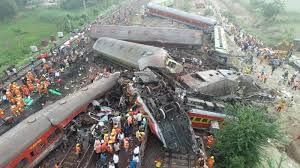
Why in news?
Indian Railways expects to launch Kavach CAS on Mumbai-Delhi-Kolkata routes by March 2025.
About Train Collision Avoidance System (TCAS)
Details
Development
- Development of Kavach CAS started in 2011 by Indian Railways and Research Designs & Standards Organisation (RDSO).
- Key developer: B. Rajaram, renowned for the Skybus Metro system.
- Field trials commenced in 2014, with final approval granted in 2019.
- Safety Parameters
- Certified for Safety Integrity Level 4 (SIL-4) operations.
- Working Mechanism
- Components: Trackside RFID tags, onboard locomotive equipment, radio infrastructure.
- Functionality: Real-time monitoring, driver alerts, and automatic braking to prevent collisions.
- Data Inputs: Location, direction, time.
- Event Recorders: Retain records for post-incident analysis.
- Collision Prevention
- Alert Mechanism: Alerts the locomotive pilot if a ‘red signal’ is missed.
- Automatic Braking: If speed exceeds 15 kmph after a red signal, Kavach applies brakes to halt the train.
- Issues
- High Cost: INR 50 lakh per kilometer for deployment.
- Low Coverage: Covers only 1,500 kilometers out of the total 68,000-kilometer rail network (as of November 2023).
How does CAS work in ships and aircraft?
Key Systems
- Ships
- AIS (Automatic Identification System): Sends and receives data on location, speed, and direction between ships and land-based stations.
- LRIT (Long Range Identification and Tracking): Requires ships to report location, time, and equipment every 6 hours to authorities. Data is shared with contracting governments and rescue operators via International LRIT Data Exchange.
- Aircraft
- Transponders: Respond to radio-frequency pings to build a 3D view of surrounding air traffic. Alerts and Resolution: Issues alert if another aircraft is within 48 seconds (traffic advisory) or 30 seconds (resolution) of a collision.
- Radar Altimeters and Obstacle Detection: Monitors distance to the ground and alerts pilots about tall obstacles like towers.
PYQ:
With reference to bio-toilets used by the Indian Railways, consider the following statements:
(1)The decomposition of human waste in the biotoilets is initiated by a fungal inoculum.
(2)Ammonia and water vapour are the only end products in this decomposition which are released into the atmosphere.
Which of the statements given above is/are correct?
(a) 1 only
(b) 2 only
(c) Both 1 and 2
(d) Neither 1 nor 2
GS2/Governance
On the allegations against the SEBI chief
Source: The Hindu
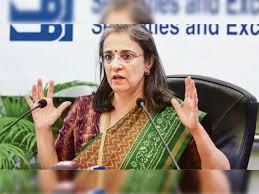
Why in news?
Allegations have been made against SEBI Chairperson Madhabi Puri Buch and her husband regarding stakes in Adani-linked offshore funds, potentially influencing SEBI's investigation on Adani.
Accusations Against SEBI Chairman Madhabi Puri Buch
- Hindenburg Research has accused Madhabi Puri Buch of conflicts of interest tied to the Adani Group.
- Financial opacity concerns have been raised regarding a consulting firm transferred to her husband.
- Potential favoritism allegations towards Blackstone, where her husband holds a senior advisory position.
Status of the Ongoing Investigation by SEBI
- Supreme Court Oversight: The Supreme Court has directed SEBI to investigate the allegations presented by Hindenburg Research.
- Show Cause Notice by SEBI: In June 2024, SEBI issued a show cause notice to Hindenburg Research, indicating active pursuit of the matter.
About SEBI's Code on Conflict of Interest
- Disclosure Requirements: SEBI's Code mandates that board members, including the Chairperson, must disclose any other office of profit or professional activities involving remuneration.
- Specific Disclosures: Members must disclose transactions in shares, outside private activities, acceptance of gifts, and any past fiduciary positions related to regulated entities.
Way Forward
- Enhanced Disclosure Requirements: SEBI should enforce stricter disclosure rules for all board members, enhancing transparency regarding financial interests, affiliations, and potential conflicts.
- Establishment of an Independent Ethics Committee: An independent ethics committee should be established to oversee and evaluate potential conflicts of interest involving SEBI board members.
Mains Question
In the light of the Satyam Scandal (2009), discuss the changes brought in corporate governance to ensure transparency and accountability.
GS3/Science and Technology
August 23rd declared as National Space Day
Source: The Statesman

Why in news?
The Centre has officially declared August 23rd as “National Space Day” in honor of the Chandrayaan-3 Mission’s historic achievement.
About the National Space Day:
- It is set to be celebrated on every year.
- It marks the successful landing of the Chandrayaan-3 mission’s Vikram Lander and Pragyan Rover on the Moon.
Theme for 2024
Touching Lives while Touching the Moon: India’s Space Saga highlights space exploration’s impact on society and technology.
Significance
India became the fourth country to land on the Moon and the first to land near the Moon’s southern polar region.
About Chandrayaan-3 Mission
- Details:
- Launch: India’s third lunar mission, second attempt at soft landing on the Moon.
- Launched on July 14, 2023. Landed on August 23.
- Landing Site: Near the Lunar South Pole (Coordinates: 69.373°S 32.319°E)
- Mission Objectives:
- Demonstrate safe and soft landing on the Moon.
- Rover mobility on lunar surface.
- Conduct in-situ scientific experiments.
- Components:
- Propulsion Module: Carries lander and rover to 100 km lunar orbit; includes SHAPE payload.
- Lander Module (Vikram): Instruments include ChaSTE, ILSA, Langmuir Probe, Laser Retroreflector Array.
- Rover Module (Pragyan): Instruments include APXS, LIBS.
- Major Findings:
- Lunar Surface Temperature: Recorded up to 70°C, higher than expected.
- Elemental Composition: Sulphur, aluminum, calcium, iron, chromium, titanium, manganese, silicon, and oxygen confirmed.
- Landing Site Name: Named by PM as ‘Shiv Shakti’ (Sanctioned by IAU as “Statio Shiv Shakti”).
PYQ:
Consider the following statements:
1. The Mangalyaan launched by ISRO is also called the Mars Orbiter Mission.
2. Made India the second country to have a spacecraft orbit the Mars after USA.
3. Made India the only country to be successful in making its spacecraft orbit the Mars in its very first attempt.
Which of the statements given above is/are correct?
(a) 1 only
(b) 2 and 3 only
(c) 1 and 3 only
(d) 1, 2 and 3
GS1/History & Culture
Jewish - A Dwindling Community in India
Source: India Today
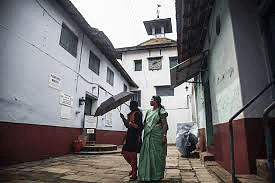
Why in news?
India's Jewish community is projected to comprise 4,000–5,000 people now, down from 20,000–50,000 in the mid-1940s.
History of the Jews in India:
Origin:
It is believed that the first Indian Jews originated from Israel, settling on the Malabar coast after the Assyrian conquest of the Kingdom of Israel in the 9th century B.C.E. This includes the Bene Israel, the Cochin Jews, and the Bnei Menashe.
Under British imperial rule:
Indian Jews flourished under British rule, reaching peak population and wealth in British India, with numbers ranging from 20,000 to 50,000 in the mid-1940s.
Jewish emigration from India:
The rise of Indian nationalism post-independence and the establishment of the State of Israel in 1948 led to significant emigration of Jews from India, as many identified more with Britain than India.
Jewish community in India today:
India is home to three historically distinct Jewish communities—Bene Israel, Cochin Jews, and Baghdadi Jews. Presently, the community is estimated to be around 4,000–5,000 individuals.
Most members belong to the Marathi-speaking Bene Israel community, settled on the Konkan coast for centuries. Kerala is home to one of the oldest Jewish communities.
The Jews of Kerala:
The community's roots trace back to the 1,000 CE, evidenced by copper plates detailing privileges enjoyed by Jews in Cranganore. Over time, the community shifted to Cochin due to Portuguese influence.
Paradesi/ foreign Jews:
Paradesi Jews, migrants from the Iberian Peninsula, joined existing Jewish communities on the Malabar coast and in Madras, contributing to local trade in spices and precious stones.
Cultural evolution of Jews of Kerala:
The Paradesi Jews assimilated Malayalam language and customs, leading to the emergence of distinct communities within Kerala. While migration to Israel has occurred, the reasons primarily stem from Zionist influence and love for Israel.
GS3/Defence & Security
Australia, U.S., U.K. sign nuclear transfer deal for AUKUS submarines
Source: The Hindu
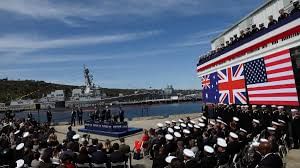
Why in news?
Australia has signed a pact with the United States and Britain to exchange nuclear information and materials, progressing its plan to equip its naval fleet with nuclear-powered submarines as part of the 2021 AUKUS security agreement. This deal solidifies arrangements among the three nations for the transfer of sensitive nuclear resources and expertise.
About
- Signed in September 2021, the new enhanced trilateral security partnership for the Indo-Pacific region involving Australia, the United Kingdom, and the United States is known as AUKUS.
- The primary focus of AUKUS will be to deliver a fleet of nuclear-powered submarines for Australia.
- It has been made clear by the involved countries that the objective is not to arm the new submarines with nuclear weapons due to Australia's commitment to the Nuclear Non-proliferation Treaty (NPT).
Key highlights of the deal
- The United States plans to supply Australia with three US Virginia class nuclear-powered submarines by the early 2030s, with an option to purchase two additional submarines if required.
- The project will conclude with the production and operation of a new submarine class named SSN-AUKUS, jointly developed by Britain and Australia based on Britain's next-generation design and incorporating advanced U.S. technologies.
Significance of this deal
1. For US
- The United States has only previously shared nuclear submarine technology with Great Britain in 1958.
- For the Indo-Pacific Region
- Under this partnership, the technology, scientific expertise, industrial capabilities, and defense forces of these three countries will collaborate to establish a more secure and stable region.
- Some analysts anticipate that this partnership may lead to an escalation in the arms race within the region.
2. For Australia
- Australia has not previously operated nuclear-powered submarines, so this initiative will enhance its naval capabilities in the Pacific, especially in light of China's assertive actions in the region.
- However, critics argue that this agreement could strain relations with Beijing, which may have negative repercussions for Australia.
3. For India
- This new pact will contribute to global efforts to counterbalance China's influence in the region.
- Australia and India are strategic partners in the Indo-Pacific region, and Australia's strengthened position could further fortify the QUAD alliance.
4. For France
- France has expressed discontent with the deal, labeling it a betrayal.
- Australia had previously committed to acquiring 12 Attack-class submarines from France, a contract that is now void due to this new agreement.
- China has criticized the formation of a new security alliance in the Indo-Pacific, asserting that such alliances should not target other nations.
- China believes that this cooperation will destabilize the region, exacerbate arms races, and undermine global non-proliferation efforts.
|
63 videos|5407 docs|1145 tests
|





















